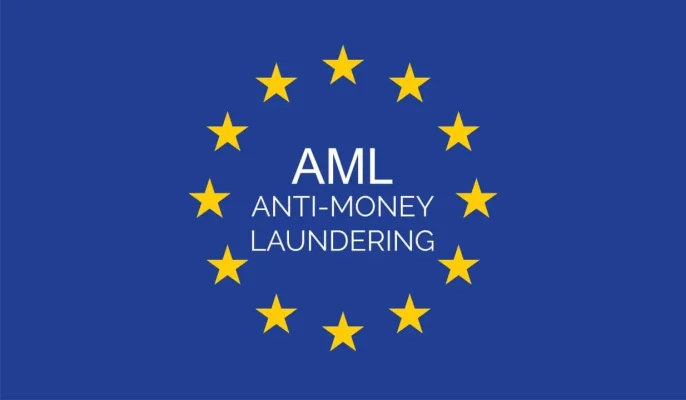Strengthening Compliance, Protecting Reputation, and Advancing Risk Management Through Strategic AML Transformation
Project Overview
In today’s rapidly evolving financial landscape, Anti-Money Laundering (AML) systems are no longer optional; they are mission-critical. Our IT company was entrusted with the strategic redesign and implementation of a full-scale AML platform for one of Europe’s leading banking institutions. Although bound by a confidentiality agreement, we can share the scale, complexity, and impact of the transformation, which spanned the entire compliance lifecycle—from risk detection and real-time transaction monitoring to case management and regulatory reporting.
The project was initiated as a recovery operation: the bank had begun implementing an AML solution through a third-party vendor but had encountered significant functional gaps, integration issues, and regulatory nonconformities. Our company was engaged to stabilize, redesign, and deploy a modern AML solution that would not only ensure compliance with the latest European AML directives but also enhance operational resilience, risk intelligence, and regulatory responsiveness.
Project Background and Initial Challenges
The bank had already invested significant time and resources into implementing an AML platform, but the results fell short of expectations in several critical areas:
- Excessive False Positives: The existing system flagged large volumes of benign transactions, overwhelming investigators and delaying escalation of real threats.
- Data Silos and Gaps: Multiple systems (core banking, payments, CRM, loan origination) were not fully integrated, resulting in fragmented customer and transaction views.
- Manual Processes: Investigations, alert escalation, and reporting relied heavily on spreadsheets and ad hoc communication channels.
- Regulatory Pressure: Internal audit teams had flagged deficiencies, and regulatory deadlines loomed with high expectations for timely, auditable reporting.
- Lack of Scalability: As transaction volumes grew, the system struggled with latency, data integrity issues, and alert backlogs.
The bank needed a strategic partner with deep regulatory understanding, robust technical capabilities, and the ability to deliver fast, structured results under tight governance.
Our Implementation Approach
We adopted a four-phase execution model tailored to transform the AML program across operational, technical, and regulatory dimensions.
1. Diagnostic and Strategic Planning
- AML Ecosystem Audit: We conducted a deep-dive analysis of existing workflows, data sources, rulesets, and alert generation patterns.
- Stakeholder Interviews: Engaged stakeholders from compliance, risk, IT, and audit teams to capture end-user pain points and institutional compliance goals.
- Gap Analysis: Mapped current system output against EBA guidelines, 6AMLD (Sixth Anti-Money Laundering Directive), and FIU reporting standards.
- Target Operating Model: Defined the desired future-state AML architecture, including risk scoring, transaction surveillance, customer due diligence (CDD), and case lifecycle automation.
2. Technical Architecture and Data Integration
- Unified Data Layer: Designed and implemented a centralized data integration hub connecting over 20 internal systems and third-party feeds (e.g., KYC, sanctions lists, PEPs databases).
- Real-Time Processing: Enabled real-time transaction streaming and flagging using event-driven architecture (where applicable).
- Customer Risk Scoring Engine: Developed a dynamic risk rating model that recalibrates based on customer activity, geographic risk, and behavior anomalies.
- Compliance Data Dictionary: Introduced metadata layers and business glossary for common definitions (e.g., suspicious activity, beneficial owner, cross-border wire transfer) to reduce inconsistencies across teams.
3. Rules Optimization and Alert Intelligence
- Ruleset Rationalization: Rebuilt and optimized over 100 detection rules, prioritizing typologies relevant to the bank’s customer base and geography (e.g., layering, structuring, trade-based money laundering).
- False Positive Suppression: Integrated machine learning classifiers (where permitted by regulations) to reduce false positives and elevate high-confidence alerts.
- Scenario Simulation and Testing: Created sandbox environments to test new rules and risk models against historical data, validating their effectiveness before production release.
- Tuning Dashboard: Delivered a live dashboard enabling compliance managers to view rule performance, alert volumes, false positive rates, and case conversion metrics.
4. Case Management and Regulatory Reporting
- Workflow Automation: Introduced a fully automated case lifecycle management system with built-in escalations, investigator assignments, and activity logging.
- SAR Reporting: Integrated Suspicious Activity Report generation directly with the relevant Financial Intelligence Unit (FIU) in the country of operation.
- Audit Trail Enablement: Ensured every action (alert assignment, case escalation, data change) was logged for forensic traceability and internal audit readiness.
- KPI Reporting Suite: Created executive dashboards with real-time metrics on alert aging, case backlog, risk trends, investigator productivity, and regulatory compliance status.
Technology Stack (Illustrative Overview)
The solution was delivered using best-in-class technologies tailored to the client’s infrastructure and compliance requirements:
- Core AML Platform: Commercial AML solution (FVKAML, Oracle FCCM, Actimize, or equivalent based on client’s choice)
- Data Integration Tools: Apache Kafka, Informatica, SQL-based ETL pipelines
- Monitoring and Analytics: Embedded analytics via Power BI/Tableau, and dashboard modules within the AML platform
- Case Management: Workflow engine with SLA triggers, alert auto-clustering, and audit-ready logging
- Security and Compliance: Full encryption at rest and in transit, GDPR-compliant data handling, role-based access control (RBAC), and MFA
Client Benefits and Outcomes
The AML transformation delivered measurable and sustainable benefits across compliance, risk, and operational areas:
1. Enhanced Detection Accuracy
- False positives reduced by over 60%, allowing investigators to focus on truly suspicious activity.
- Introduction of behavioral analytics improved detection of advanced laundering schemes (e.g., use of mules, shell structures).
2. Improved Regulatory Confidence
- Successfully passed internal audit and external regulator readiness reviews.
- Automated SAR filings and comprehensive reporting dashboards streamlined the relationship with regulatory bodies.
3. Operational Efficiency
- Case closure rates improved by 40% due to automated alert triaging and escalation workflows.
- Investigation time per alert decreased significantly, empowering compliance teams to handle larger volumes without increased headcount.
4. Unified Customer Risk Profiles
- Centralized customer risk scoring allowed a single view of customer behavior, onboarding history, and flagged activity across the enterprise.
5. Scalable Architecture
- The platform supports rapid deployment of new rules, integration of additional data sources, and scaling to meet future transaction growth or new branch rollouts.
6. Training and Independence
- Delivered full knowledge transfer and role-based training to compliance, audit, and IT teams, reducing long-term vendor dependency.
- Internal teams now manage rule tuning, case workflows, and report generation autonomously.


